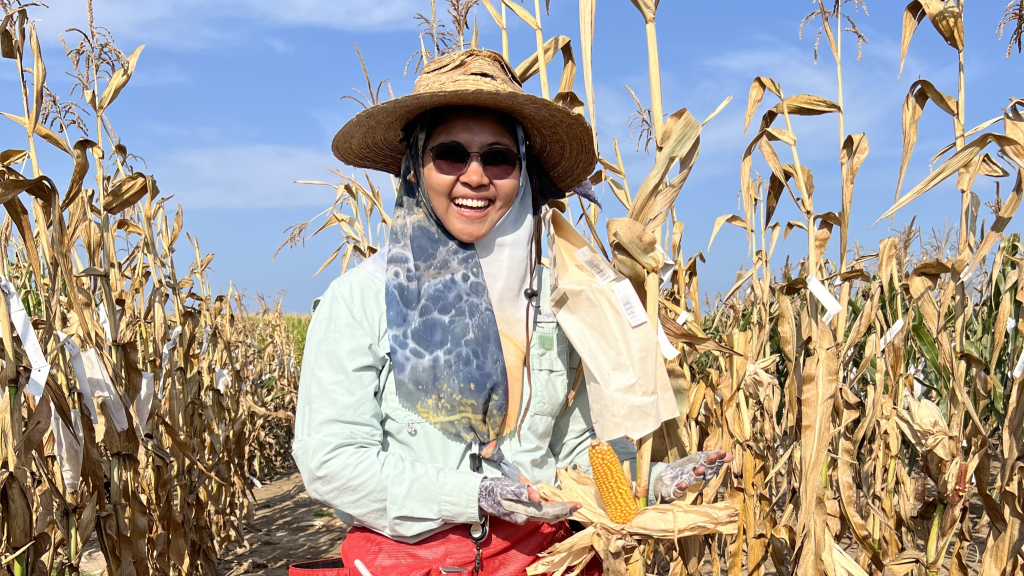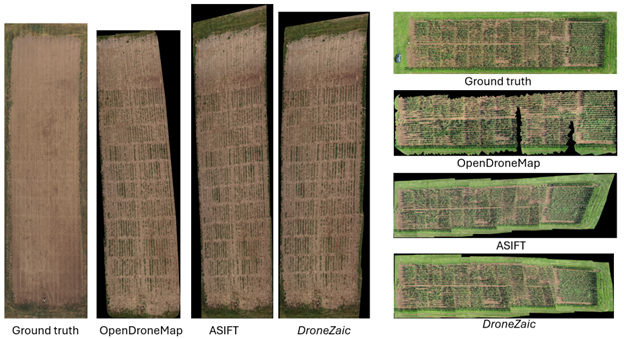November 24, 2025
An interdisciplinary collaboration showcases Mizzou’s leadership in advancing smarter farming with better data.

At Mizzou, we cultivate real-world insight to develop common-sense solutions and share them with communities around the globe.
A technological innovation from a pair of Mizzou Engineering researchers will make precision agriculture faster and more accessible, unlocking opportunities for smallholder farmers everywhere
Dewi Kharismawati grew up in a small village in Indonesia, where her father and most people she knew worked the land.
“Each farmer only has a small field, and sometimes they can only plant and harvest enough for themselves,” she said. “I saw how hard it is, working from sunup to sundown in the tropical heat.”
Subsistence farmers like her father stayed on Kharismawati’s mind when she came to Mizzou for a bachelor’s degree in computer science, and they inspired her to stay for grad school.
“I chose agriculture as the application for my computer science skills because I wanted to give developing countries the tools enjoyed by developed countries,” she said.
Kharismawati knew firsthand the risks inherent in agriculture. Adverse weather and volatile markets mean even large ag operations live on the financial edge; for subsistence farmers, the threat is existential.
In recent years, some farmers have begun using unmanned aerial vehicles (UAVs) to mitigate those risks. Farmers can use drone photography to accurately estimate chlorophyll levels, making a big difference come harvest time.
Up to now, such monitoring has meant investing tens of thousands of dollars in UAVs and the GPS and environmental sensors they need to operate. Pilots have to follow exact flight plans at precise altitudes, stopping over specific waypoints to take still images.
“In just 20 minutes, you can collect a vast amount of data,” Kharismawati said. “The challenge lies in processing that data.”
To stitch together image after image of thousands of nearly identical plants — a process called mosaicking — farmers need to buy a limited-time license to software, often as a monthly subscription.
Kharismawati wanted to overcome these financial barriers to precision agriculture, so she sought out Toni Kazic, an associate professor in the Department of Electrical Engineering and Computer Science who studies computational biology and the genetics of corn and its leaf lesions.
Together, they developed a faster, more accurate and open-source alternative to conventional mosaicking methods. The researchers describe the tool, which they call DroneZaic, in an article published in Plant Phenotyping Journal.
DroneZaic enables anyone with a consumer-grade drone to capture high-resolution data without GPS, pre-set flight paths or engineering support. Drone pilots can shoot non-stop video without GPS while adjusting speed and path as needed. They can also fly as low as 10 feet, giving them much better resolution that enables detailed phenotyping.
DroneZaic requires fewer frames — and less time and processing power — than conventional mosaicking software to build a clear, complete picture of a field, even in poorly lit conditions. As a result, users can generate accurate mosaics in minutes, not hours, with minimal setup or expertise.

The DroneZaic source code is available at https://github.com/dek8v5/DroneZaic.git. A step-by-step usage guide, designed for both developers and non-developers, is at https://dek8v5.github.io/DroneZaic.
Kazic and Kharismawati are working with the College of Agriculture, Food and Natural Resources and the Mizzou Remote Instrumentation Science Environment to create a portal where farmers can upload videos and receive mosaics and actionable suggestions for their fields.
While designed for agriculture, DroneZaic’s flexibility and accuracy also make it valuable for any field requiring dynamic, high-resolution aerial data: conservation, disaster response, search and rescue, or urban planning.
The project owes its success to Mizzou’s long tradition of interdisciplinary collaboration.
“I’m a computational biologist in the College of Engineering, but I’ve worked closely with colleagues in the Department of Agriculture and in academic units across campus. The Missouri Maize Center and the Interdisciplinary Plant Group have been essential to our work,” Kazic said. “This research could not have happened anywhere else but Mizzou.”
It’s another example of how Mizzou pursues meaningful progress not just for its own sake but for that of communities around the world – something Kharismawati has wanted to do ever since she left Indonesia.
“I always dreamed of bridging the gap between agriculture and technology,” she said. “Mizzou made that possible.”
CTA Mizzou Engineering is a rich environment for research. Plant your ideas here.